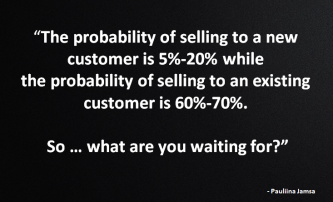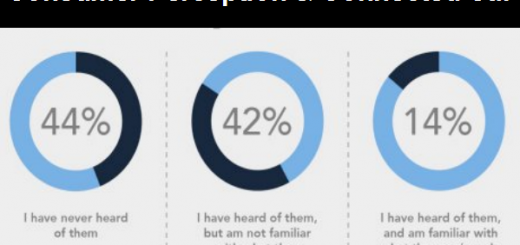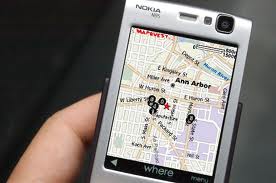 In the past few years the importance of social media in global digital strategies has increased exponentially. Around 70% of Facebook’s 750 million active users are not from the U.S and the platform has been translated in more than 70 languages. Youtube is localized in 23 countries in 24 different languages, and 70% of the Youtube traffic comes outside the U.S. What comes to Twitter, half of the tweets on Twitter are not in English.
In the past few years the importance of social media in global digital strategies has increased exponentially. Around 70% of Facebook’s 750 million active users are not from the U.S and the platform has been translated in more than 70 languages. Youtube is localized in 23 countries in 24 different languages, and 70% of the Youtube traffic comes outside the U.S. What comes to Twitter, half of the tweets on Twitter are not in English.
For a global brand this brings great opportunities, since these three International social media platforms are already familiar and localization can expand their reach to new audiences. However, as with any type of marketing, the brand having social media success in their own country does not mean that same approach and tactics work abroad. This is why it is important to take in account the following best practices and tips, before launching an international social media strategy.
Tip #1 Run a market research across regions
The adoption rate of each social media platform and the way people use social media varies greatly in different countries and regions. Even if Twitter, Facebook and Youtube are used across the globe, these platforms may not have reached yet the same level of popularity than the local networks. While Facebook is not very popular in Asia and Russia, Twitter has encountered big success in Japan, because of its anonymity and mobile friendliness. In China, Twitter-like Weibo and social network Qzone with 150 million active users are the platforms of choice while in Russia V-kontakte is the local version of Facebook. What all continents have in common is the high usage rate of Youtube – used via mobile, tablets, PC or netbooks.
Therefore it is very important to do a proper market research across regions to find the right platform to invest in. Once you know where your audience is at, you are half way reaching your goal.
Tip #2 Get to know your audience
Once you have found your audience, listen what the general discussion is about and what the users are saying about your brand and competitors. See how your target is engaging with companies, how they use the platform and what the best practises in the particular country are. By understanding the cultural variations you will more easily be able to avoid pitfalls and identify the trends before entering the market.
Tip #3 Go global, but think local
Developing a cohesive, global strategy is important, but it needs to be customized based on your knowledge of the local behaviour and customs. Identify what are the global goals and objectives and what are the goals and objectives per region. Your brand might be highly popular in one country, which means one of your goal might be increasing brand loyalty, however in another country people do not recognize your brand and you might need to focus more on augmentation of brand awareness. Once you know what you want to achieve, you are able to set up tactics to best achieve those goals.
Tip #4 Localization does not mean “translation”
Against common belief, only translating your content or posts does not mean localization. A video that works in the U.S. might not work at all in France, a tactic that does miracles in Spain might be offensive in Argentina, a post that is very funny in Korea might not be understood at all in Japan, etc.
Understandably a brand might be tempted to have a general Facebook, Youtube or Twitter page to save in costs, or have different pages per region with the same, translated content. I have seen pages that use basic Google translation, which – believe me – does not work. I wrote an example of Red Bull a year ago: The brand sent in Facebook a link straight to a Japanese Google translated page without checking what the translation was. Let’s just say it involved alcohol and crack.
Point is: if you want to have localized content, do it properly. Involve local people and publish content and offers that are relevant for local consumers. By respecting cultural references and taking in account local trends, events and holidays, you can give users more personalized experience and help your brand to connect the audience on a deeper level.
But if you opt-in for plain translations, your reaction speed is slower, your message might not be understood and lack of local relevancy might make the amount of the “fans” or “followers” drop.
Tip #5 Involve, train and support local market units
For a global company with a network of market units across the globe, it is very important to involve local markets from the early stages of the process. They have the best knowledge of the local customs, user behaviour and trends as well as their local competitors’ activity.
By getting local markets aboard and supporting them with their local social media pages, the results will be much better than doing it alone or focusing on one global page. Please note that support does not mean control. Social Media is highly reactive and by putting barriers for local markets, the strategy is likely to fail. If you strictly control what gets published, by the time translation agency has sent you translations, the “news” is already old.
Instead, offer basic social media training and allow markets to pull content from your global channel. Market units will then translate and localize the content themselves according to their country’s requirements. Motivate and share best practices per country across the units. Publish links to local channels in your global page to promote local pages and direct fans to more relevant content.
Having worked in a global company, I know that the main issues while developing a global social media strategy are the cost and the novelty of the channel. Everything needs to be cost effective and since top executives usually classify social media as something for kids, it is usually argued that a basic Facebook, Twitter and/or Youtube page is enough.
However, an investment in these basic global channels and training for the local markets can really pay off. If the local markets are motivated and have freedom to act, they will be investing their time and effort to update the pages and engage with the audience. Keeping the social media page alive does not cost much money, but it can reach a larger audience than the old media or banner campaigns. It is a way to really engage with your audience as well as to encourage WOM and consumer generated media.







